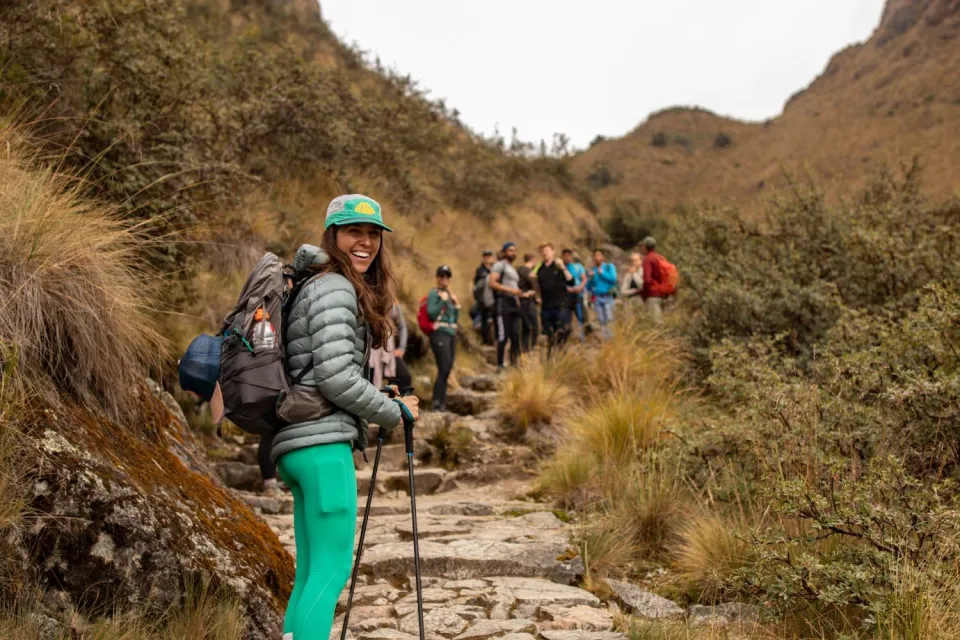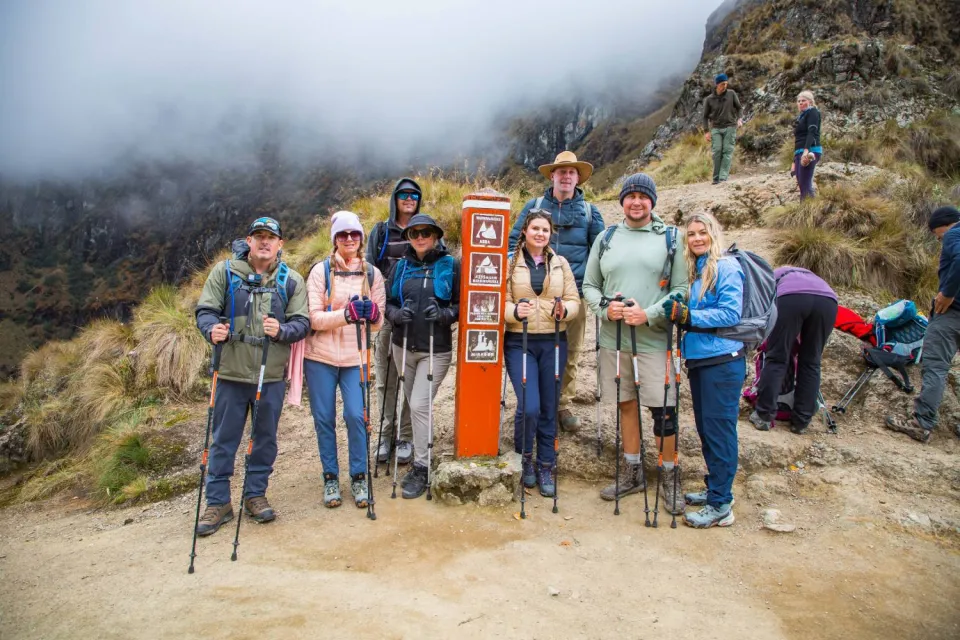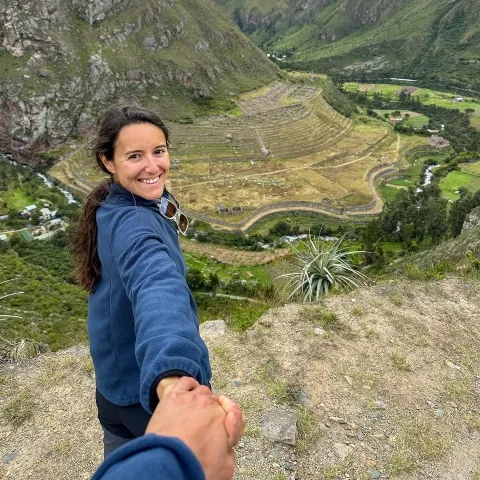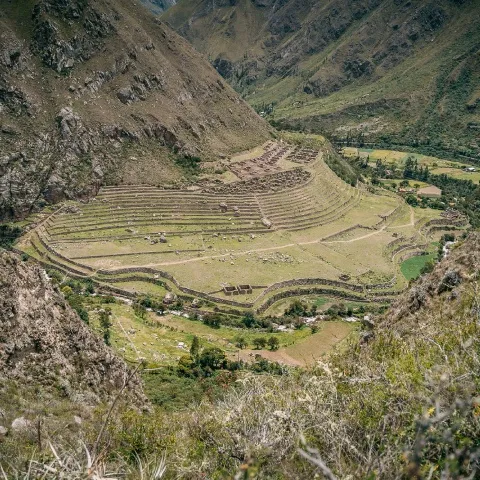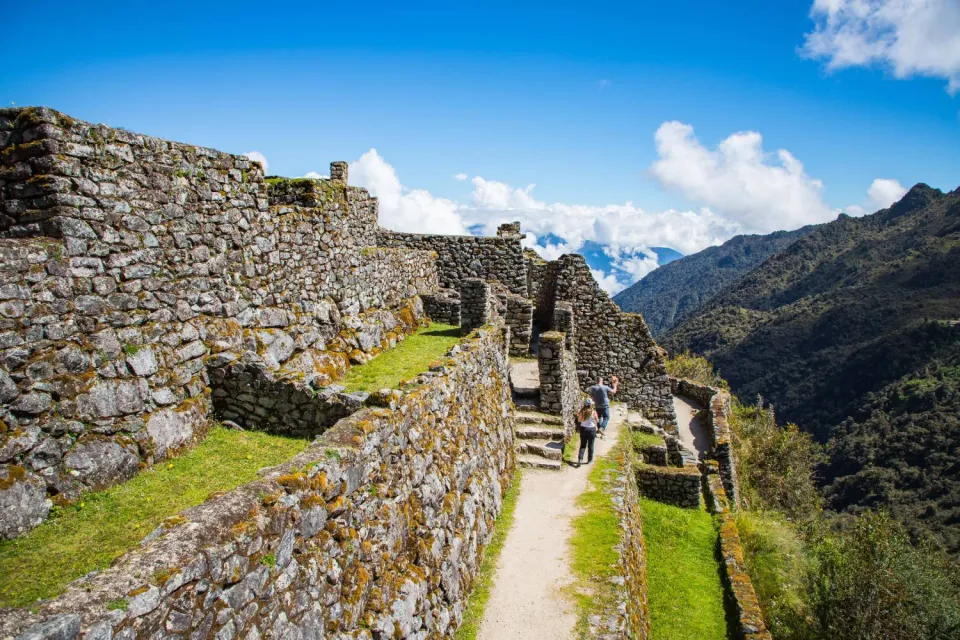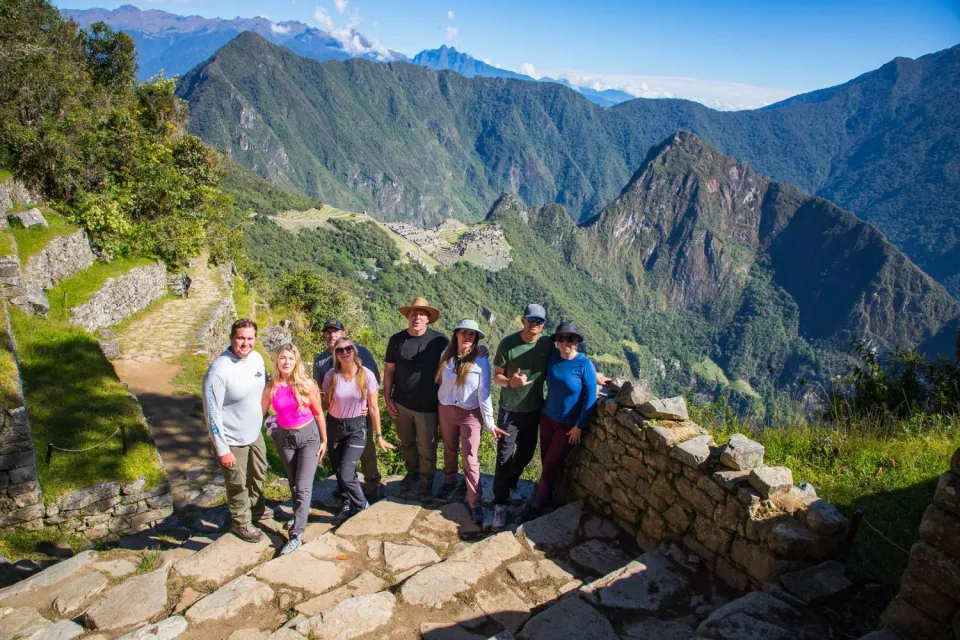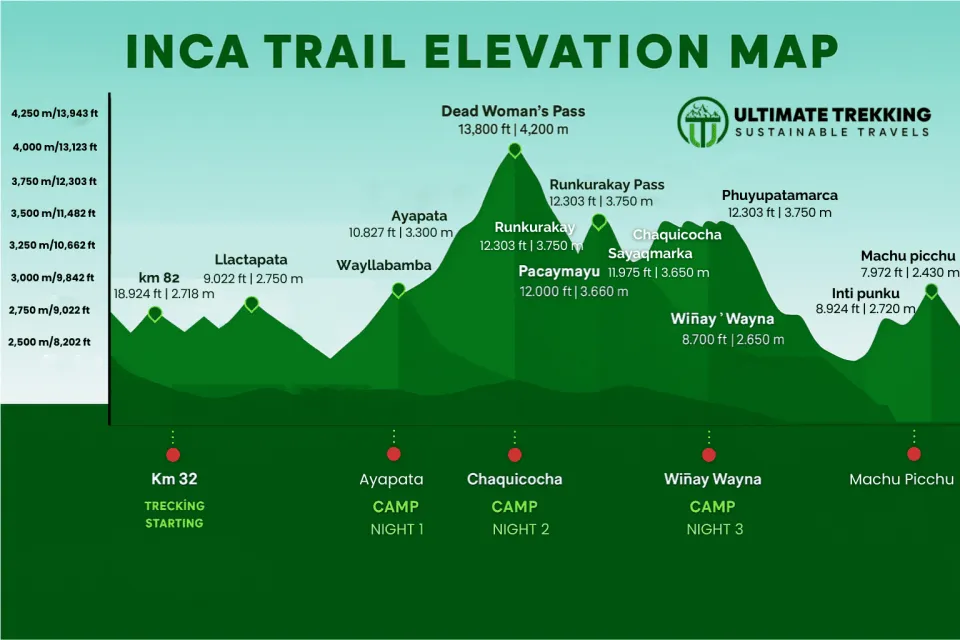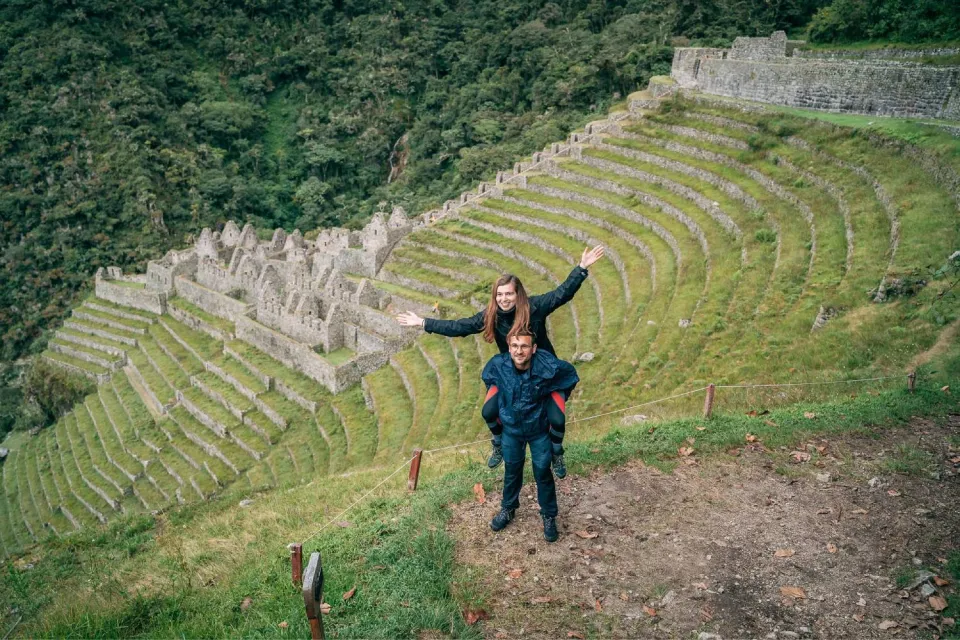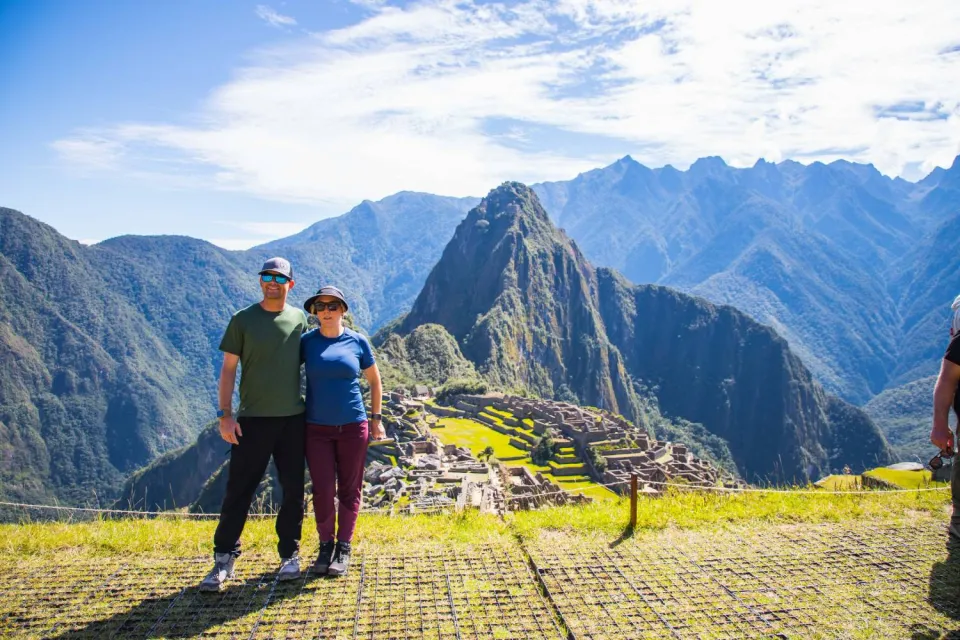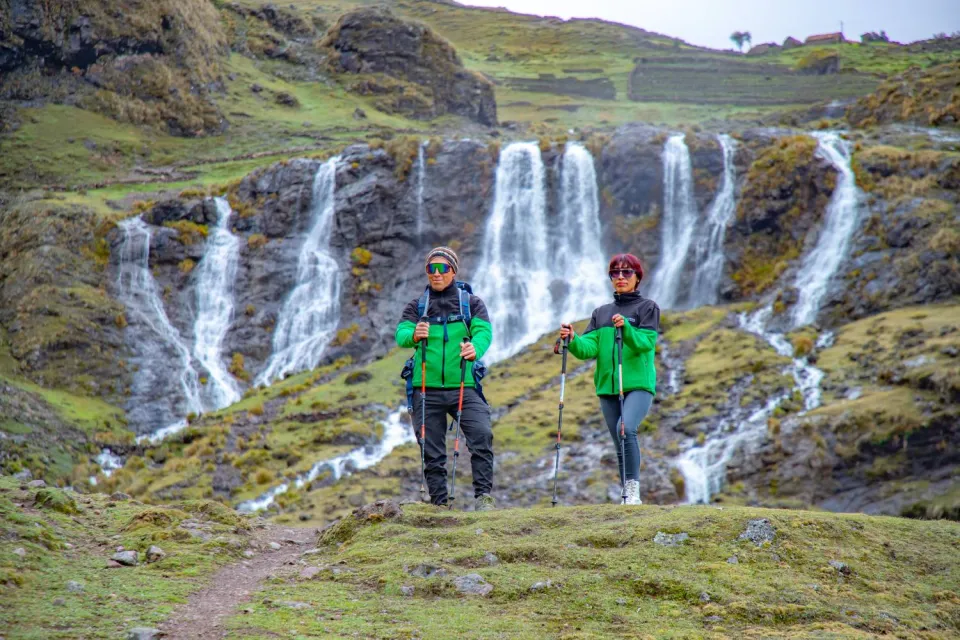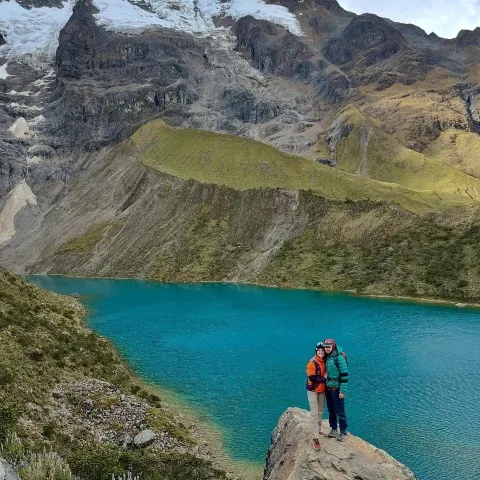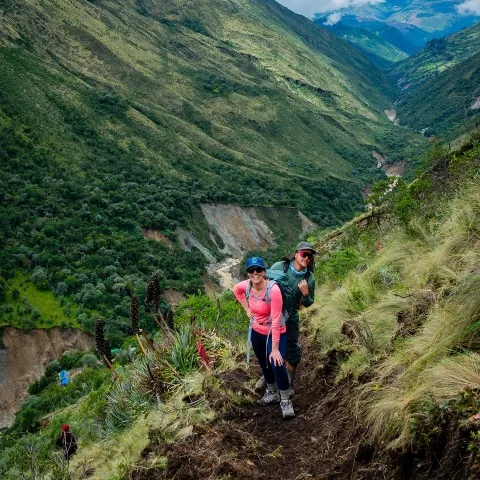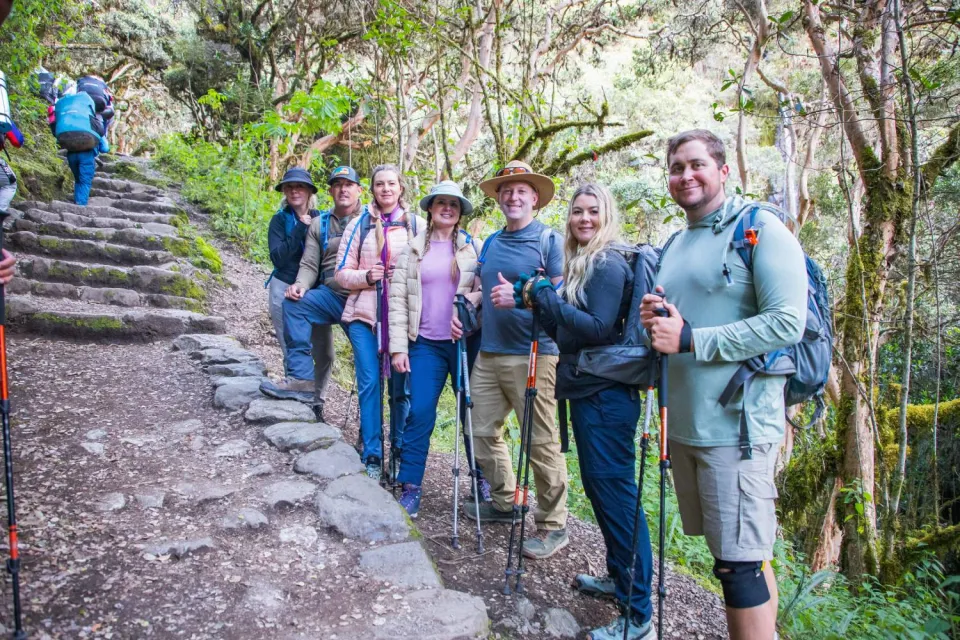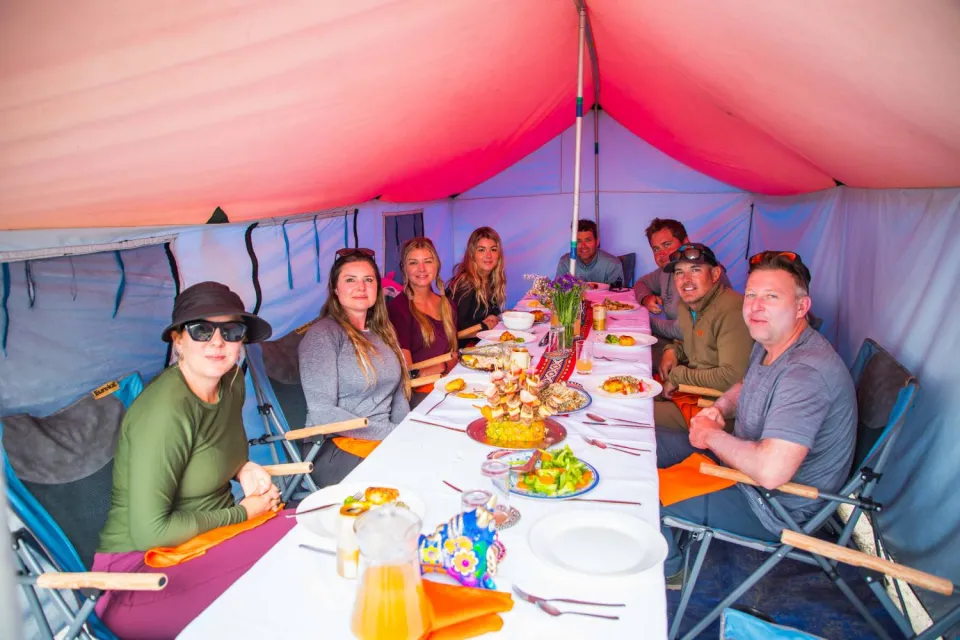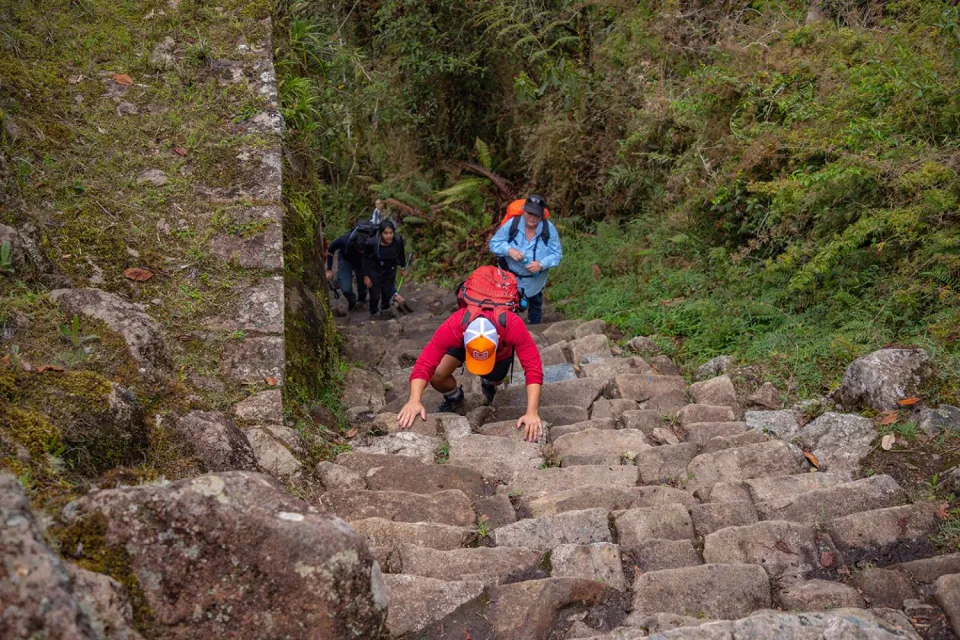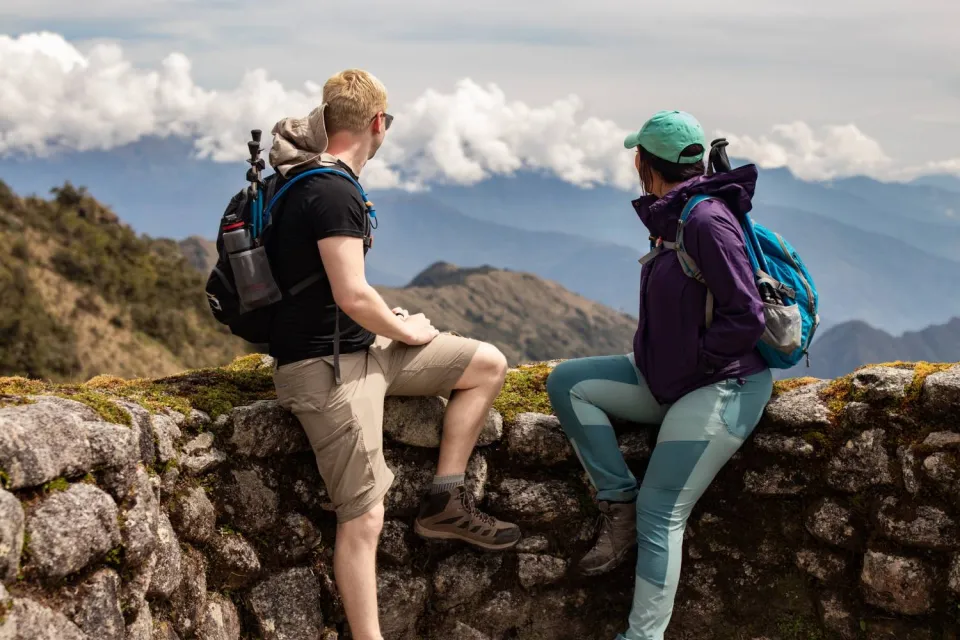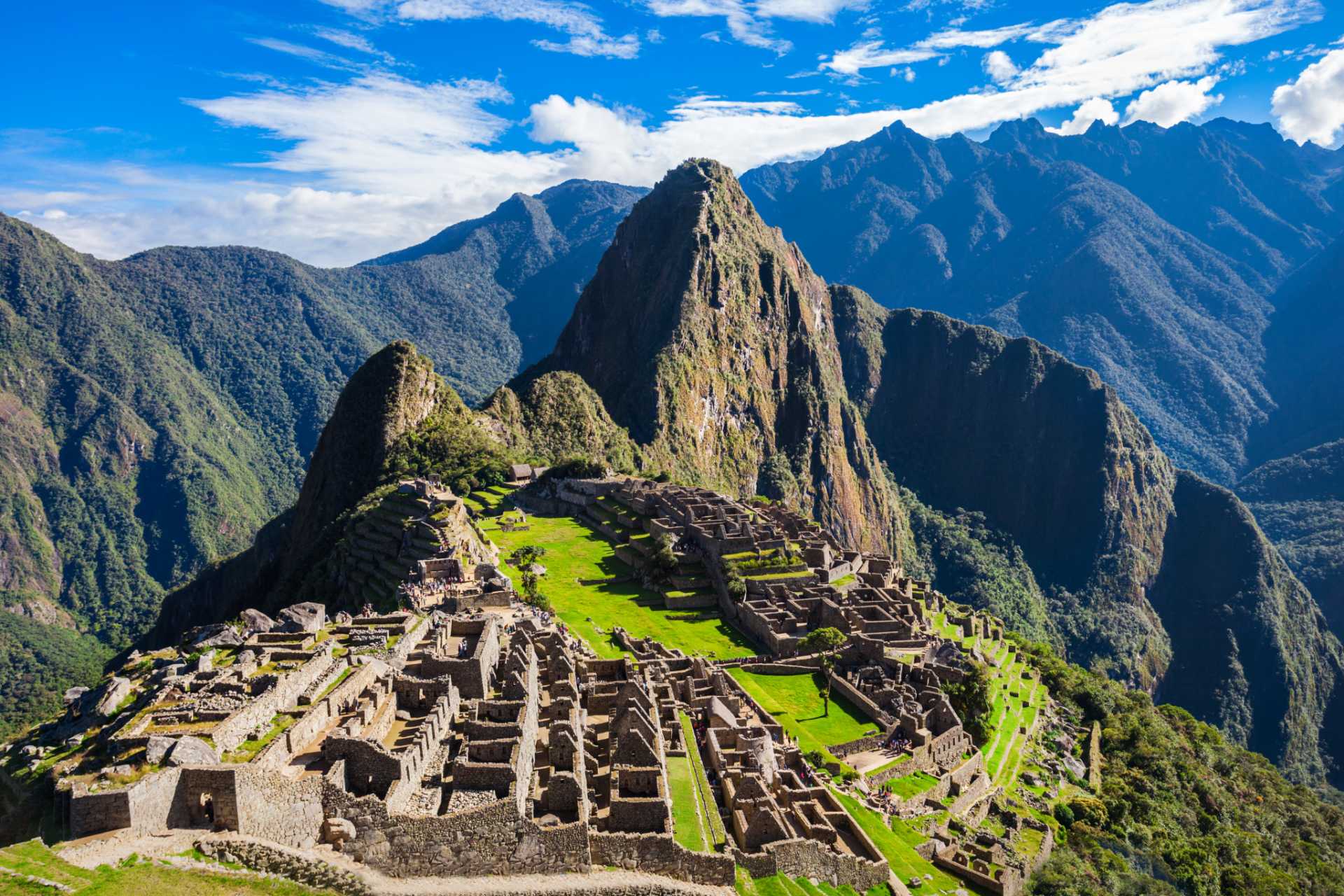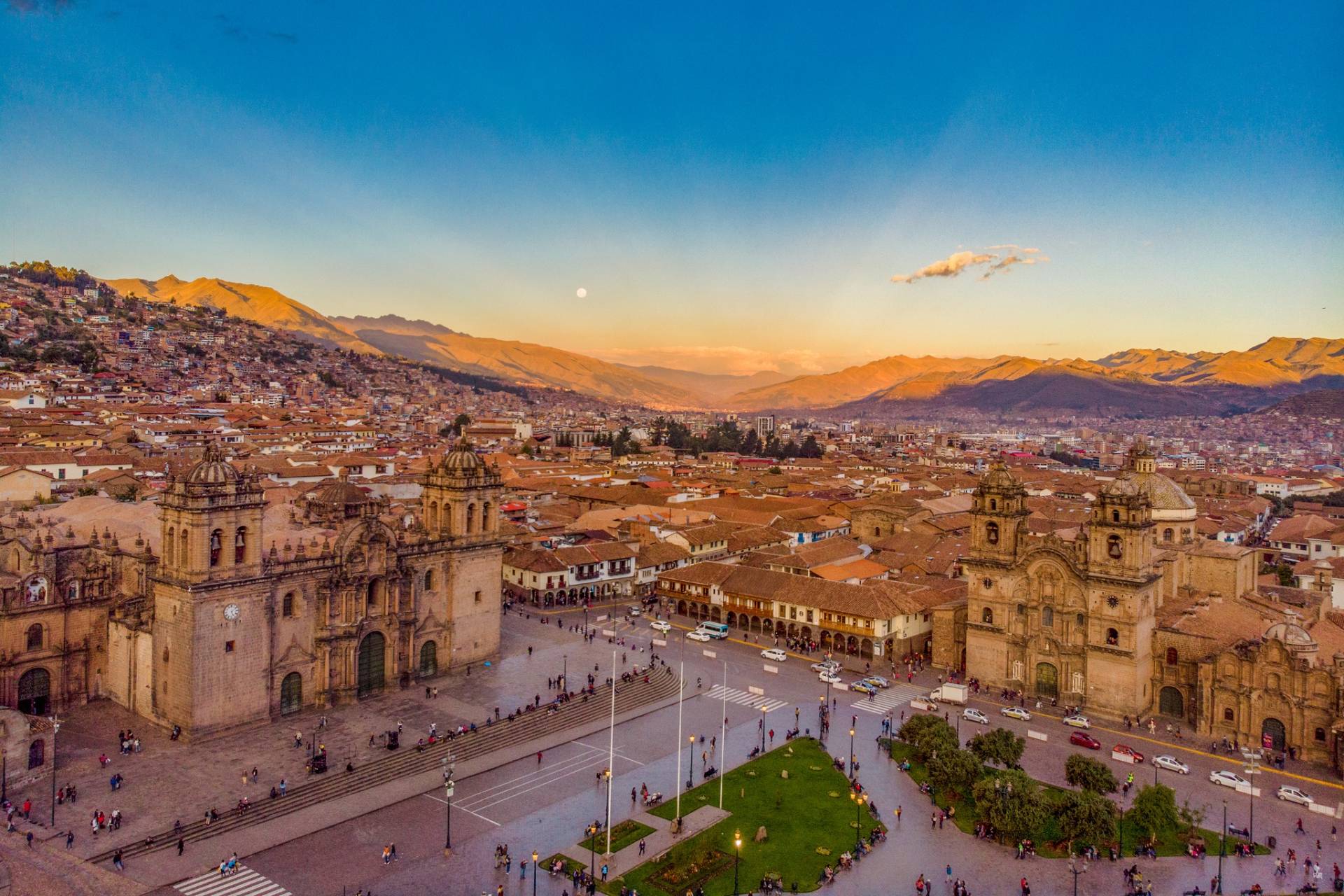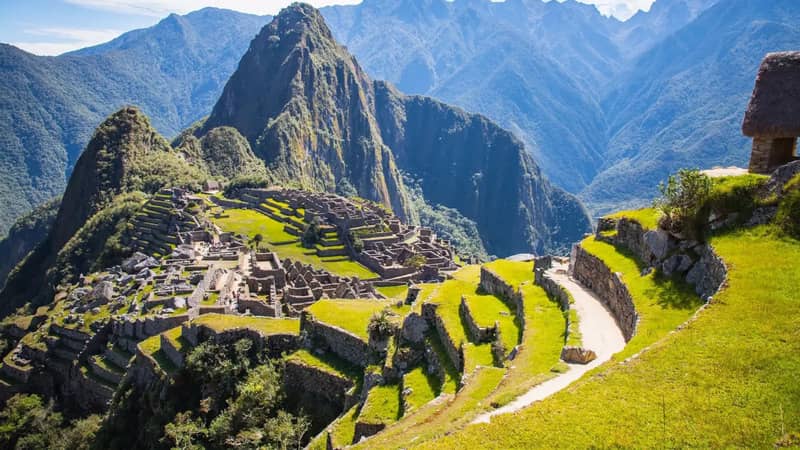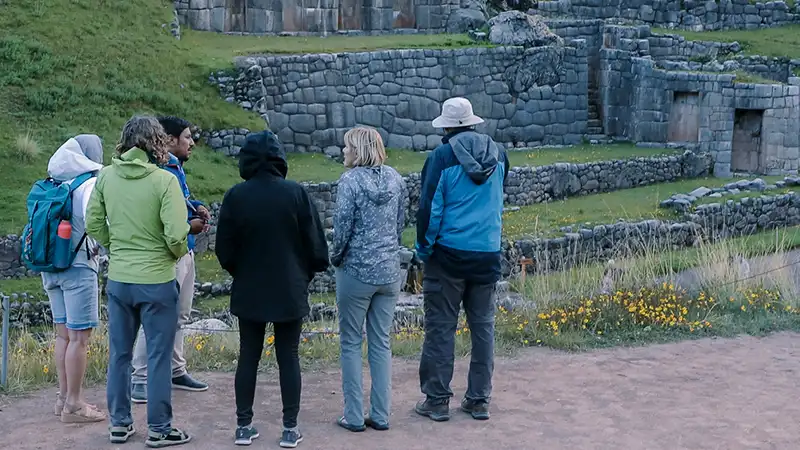Most people think that the Inca Trail is just a 4-day hike to Machu Picchu. They are wrong.
What you are really doing is traversing an ancient rite of passage that transformed Inca warriors into legends.
But before you begin this epic journey, there is one key question you need to answer: how long is the Inca Trail to Machu Picchu really?
Spoiler: the length is just the beginning of the challenge.
How long is the Inca Trail to Machu Picchu?
The Inca Trail to Machu Picchu is one of the most famous and spectacular trekking routes in the world. This ancient road built by the Incas not only takes you to the majestic citadel of Machu Picchu, but also allows you to travel part of the network of roads known as the Qhapaq Ñan, which extended throughout the Tahuantinsuyo.
But how long does this hike really last? The answer depends on the version of the trail you choose, as there are several alternatives, each with its own duration, level of difficulty and archaeological attractions.
The best known version is the Classic Inca Trail, with a duration of 4 days and 3 nights, during which you will cover approximately 42 kilometers (26 miles). It is the equivalent of running a marathon, but at high altitude and through mountains, cloud forests, valleys and numerous archaeological sites.
All the effort has an unforgettable reward: reaching Machu Picchu through the Inti Punku (Sun Gate), the ceremonial entrance used by the ancient Incas.
Why is it not just about distance?
At first glance, 42 km may not seem like much if you are used to hiking. Divided into 4 days, you will walk an average of 10 to 12 km per day.
However, the Inca Trail is not a flat trail. You will face steep climbs, long stone stairs and steep descents. In addition, you will walk at altitudes ranging from 2,600 m to 4,215 m a.s.l., which adds a considerable level of difficulty. Even people in good physical shape can be affected by altitude sickness.
Therefore, it is recommended to arrive in Cusco at least two or three days before to acclimatize properly. Cusco is located at 3,399 m a.s.l., a perfect intermediate altitude for your body to adapt before starting the trek.
The distances in the day by day of the classic Inca Trail
Day 1: Quiet start
- Starting point: Km 82 (Piscacucho)
- Destination: Ayapata Camp
- Altitude: 2,600 m → 3,000 m
- Distance: 11 km / 6.8 miles
- Estimated time: 6 to 7 hours
The first day is a “warm-up”. You will walk uphill between agricultural lands and small Andean communities. You will also visit the archaeological site of Llactapata.
Day 2: The most demanding day
- Starting point: Wayllabamba
- Destination: Chaquicocha Camp (via Pacaymayo)
- Altitude: 3,000 m → 4,215 m (Warmiwañusca Pass) → 3,600 m
- Distance: 12 km / 7.5 miles
- Estimated time: 7 to 8 hours
You will climb the famous Dead Woman's Pass (Warmiwañusca), the highest point of the trail. This day will test your physical and mental endurance, with steep ascents and a steep descent at the end of the day.
Day 3: The longest and most beautiful day
- Starting point: Pacaymayo
- Destination: Wiñay Wayna Camp
- Altitude: 3,600 m → 2,650 m
- Distance: 16 km / 10 miles
- Estimated time: 7 hours
Although this is the longest day, it is also the most rewarding. You will cross two mountain passes and visit several archaeological sites such as Runkurakay, Sayacmarca, Phuyupatamarca and Wiñay Wayna. The views of the Andes and cloud forest are breathtaking.
Day 4: Brief but epic
- Starting point: Wiñay Wayna
- Destination: Machu Picchu
- Altitude: 2,650 m → 2,430 m
- Distance: 5 km / 3 miles
- Estimated time: 1.5 to 2 hours
You will wake up around 3:00 a.m. to walk in the dark to Inti Punku, from where you will see Machu Picchu illuminated by the rising sun. This is the highlight of the trek.
Key altitudes along the way
You can visualize how the altitude varies along the trail with an elevation map.
Here is a summary:
- Wayllabamba: 3,000 m
- Warmiwañusca Pass (Mujer Muerta): 4,215 m (13,000 ft)
- Pacaymayo: 3,600 m
- Wiñay Wayna: 2,650 m
- Machu Picchu: 2,430 m (2,430 ft)
Why is it called “Dead Woman's Pass”?
The name “Warmiwañusca” in Quechua literally means “the dead woman”. It is said that the profile of the mountains seen from the valley resembles the silhouette of a woman lying down, as if resting eternally.
Another more popular interpretation among hikers is that this name refers to the hardness of the ascent, as many arrive exhausted at the top, “dead” from exhaustion.
Variations of the Inca Trail
The Inca Trail is not a single experience: there are several versions that vary in duration, level of difficulty, itinerary and services included.
These options allow you to adapt the trek to the time available, physical condition and type of experience you are looking for. Here are some of the most popular ones:
Short Inca Trail
This is the short version of the classic Inca Trail, perfect for those who have little time or prefer a lighter hike without losing the essence of this ancestral route.
The trek begins at kilometer 104 of the railroad to Machu Picchu. During the first day you will walk approximately 12 km (about 6 to 7 hours), passing through the beautiful archaeological site of Wiñay Wayna before arriving at Inti Punku or Sun Gate, from where you will have your first panoramic view of Machu Picchu.
The night is spent in a hotel in Aguas Calientes, and the next day you will visit the citadel of Machu Picchu with a guide.
- Duration: 2 days / 1 night
- Difficulty level: Moderate
- Includes: Entrance fee to Machu Picchu, guide, hotel accommodation, transportation, box lunch and lunch.
- Approximate distance: 12 km walking
Classic Inca Trail (5 days / extended version)
This version follows the original 4-day route, but with a more relaxed pace and an additional night, allowing you to more leisurely explore the archaeological sites along the way, such as Llactapata, Runkurakay, Sayacmarca, Phuyupatamarca and Wiñay Wayna.
It is ideal for those who want a more immersive experience, with more time to rest, enjoy the scenery and connect with Inca history.
- Duration: 5 days / 4 nights
- Difficulty level: High
- Includes: Entrance fee to Machu Picchu, guide, food, camping equipment, porters, transportation and return train.
- Approximate distance: 43 km walking
Salkantay Trek + Inca Trail (6 days)
This version combines two of the most spectacular and requested trekking routes in the Cusco region: the Salkantay Trek and the classic Inca Trail.
During the first days, you will hike the Salkantay Trek, passing through the Humantay Lake, the imposing Salkantay Pass (4,650 m a.s.l.), and descending into the cloud forests. You will then join the Inca Trail route, connecting with its final stretch to Machu Picchu.
This option is ideal for travelers in good physical condition who wish to live a complete adventure, combining the wild landscapes of the high mountains with the historical Inca legacy.
- Duration: 6 days / 5 nights
- Difficulty level: Very high
- Includes: Entrance fee to Machu Picchu, guide, full board, camping equipment, porters, transportation, return train.
- Maximum altitude: 4,650 meters above sea level (Salkantay Pass).
- Approximate distance: More than 60 km walking
Alternative Inca Trail Routes
If you are unable to book the classic Inca Trail or simply wish to live a different experience, there are other trekking routes that also take you to the majestic citadel of Machu Picchu. Each one offers unique landscapes and different ways to connect with the culture, history and nature of Peru.
Lares Trek
The Lares Trek is ideal for those seeking an experiential tourism experience. Along this route, you will walk through traditional Andean communities where you will be able to interact with the local people, learn about their customs, lifestyle and ancestral wisdom.
In addition to the cultural richness, you will enjoy breathtaking Andean landscapes: valleys, mountains, lagoons and high altitude pastures. This route allows you to connect deeply with nature and Pachamama, in a quieter and less traveled environment than the classic Inca Trail.
- Duration: 4 days (classic version)
- Difficulty: Moderate
- Maximum altitude: Approx. 4,400 m a.s.l. (Ipsaycocha Pass)
Salkantay Trek
The Salkantay Trek is the most popular alternative route to the Inca Trail. It is ideal for nature and adventure lovers, as it passes through varied and spectacular landscapes.
It starts at the heights of the snow-capped Salkantay, with views of glaciers and lagoons, and descends to cloud forests and tropical climate zones before reaching Aguas Calientes.
This contrast of ecosystems, together with its physical difficulty, makes it a challenging but very rewarding option.
- Duration: 5 days (classic version)
- Difficulty: High
- Maximum altitude: Approx. 4,650 m a.s.l. (Salkantay Pass)
Inca Jungle
The Inca Jungle Trek is the perfect option for those looking to combine trekking with adventure and adrenaline. This route includes activities such as mountain biking, rafting, hiking and ziplining, all in a jungle environment full of vegetation and tropical heat.
Along the way, you will discover coffee and cacao plantations, and have the opportunity to interact with local communities. This is a more flexible and modern route, ideal for young and energetic travelers.
- Duration: 4 days (classic version)
- Difficulty: Moderate
- Maximum altitude: Approx. 4,316 m a.s.l. (Abra Malaga)
Factors Affecting the Duration and Experience of the Inca Trail
Physical Condition and Walking Pace
Your physical condition is one of the most important factors to enjoy the Inca Trail. Along the trail there is no possibility of using horses or vehicles, so you will need to rely completely on your body.
Before booking, assess your physical condition and consider training in advance if necessary. Keeping up with the group is key to maintaining the dynamics of the hike. You don't want to be the person everyone has to constantly wait for.
Want to go at your own pace?
n excellent alternative is to opt for a private group, where you decide the pace of the walk. In these cases, if you need more time, the agency will adjust the schedule without inconvenience.
Weather conditions
The Inca Trail passes through two main seasons:
- Dry season (May to September): ideal for walking, as rainfall is minimal and the trails are dry. This facilitates walking and reduces the risk of slipping.
- Rainy season (November to March): Rainfall can be heavy, forcing the group to stop and take shelter. The terrain also becomes more slippery and demanding.
Although each season has its charm, the weather can alter the pace of the trek and the overall experience. Plan your trip with this in mind.
Group size and guided hike
The size of the group directly influences the quality of the experience. Some tour operators manage large groups with only one guide, which can lead to disorganization or even some members getting delayed and disoriented along the way.
Important tip:
Make sure the agency you choose has an adequate number of guides per group.
In our case, we offer one guide for every 9 people, thus guaranteeing personalized attention, greater safety and a better experience for all travelers.
Ready to start planning your Inca Trail trip?
If you have already decided to do the Inca Trail, the next step is to plan wisely. Booking with an authorized agency is mandatory, but you also need to know key aspects of logistics, physical preparation and what to bring with you to live this experience without complications.
Here we give you the most important data and the best tips so that you are totally ready to hike to Machu Picchu.
How many days to allocate for the whole trip?
It is true that the classic Inca Trail lasts 4 days, but there are more to consider. The altitude of Cusco (3,400 m a.s.l.) requires prior acclimatization to avoid altitude sickness. Most travelers dedicate at least one day to acclimatize and another day to explore Cusco and buy souvenirs.
Therefore, the minimum recommended time in Cusco is:
- 4 days for the Inca Trail
- 1 day for acclimatization
- 1 free day (sightseeing, shopping, rest)
Total: minimum 6 full days.
If you plan to do another trek or visit more archaeological sites, add those days to your itinerary. Many travelers decide to return another time, as Cusco is full of history, living culture and breathtaking natural scenery.
Acclimatizing doesn't mean lying down in the hotel. Go for a leisurely walk, get to know the city at your own pace and help your body adapt naturally.
📌 Don't know what to see in Cusco while acclimatizing? Read our blog: 20 amazing things to do in Cusco, Peru.
Booking guides and permits: Timeline and logistics
One of the first steps in your planning is to choose an authorized agency. This is mandatory, as you are not allowed to do the Inca Trail on your own. The Peruvian government regulates access to protect this valuable archaeological and natural heritage.
Authorized agencies like ours take care of everything:
- Entrance permit to the Inca Trail and Machu Picchu.
- Certified first aid guides
- Porters to carry part of your luggage
- Food and cooking equipment
- Tents and camping logistics
- Transportation to and from Cusco
- Return train ticket
- Emergency medical assistance and oxygen
Although the agency manages your permit, you must choose in advance the exact date you want to do the trek, as spaces are very limited.
How many tourists can do the Inca Trail per day?
Only 500 people per day can enter the Inca Trail. Of those:
- 200 are tourists
- 300 are support staff (porters, cooks and guides).
This very limited quota means that permits run out very quickly, especially in high season. Once they run out, there is no way to get new ones.
How far in advance should you book?
High season (May to September): book 4 to 6 months in advance.
- If you plan to do it in June or July, book from January or even earlier.
Low season (March, April, October, November): you may be able to find space 2 to 3 months in advance, but it is always better to book early.
⚠️ Important: In February, the Inca Trail is closed for maintenance due to the rainy season.
Recommendation:
Before booking, check the cancellation policies. Some agencies do not give refunds in case of changes or cancellations.
How to train for the Inca Trail?
Although the Inca Trail is not technical, it is physically demanding. You will walk for several hours a day, climb up and down many stone stairs and be at altitude.
Here is a basic plan to prepare you:
- Regular cardio: Walk, jog or bike at least 3 times a week.
- Climb stairs or hills: Simulate road climbs.
- Strength training: Strengthen legs, back and abdomen.
- Practice hiking: Take long walks with a loaded backpack.
- Adapt your schedule: During the trek you will wake up early. Get used to getting up early.
Packing tips
Preparing your backpack well is essential, since during the trek you will not find stores or places to stock up. Here is a list of everything you need to bring:
Personal documents
Don't forget to bring your original and valid passport, as well as your entrance tickets to Machu Picchu and the Inca Trail. You will need them to enter at different points along the trail.
Layered clothing
During the day, the weather can be warm, but at night the temperatures drop considerably. Dress in layers so you can easily adapt to temperature changes.
Proper footwear
Wear comfortable, slip-resistant trekking shoes, as you will be walking on rocky and uneven surfaces. It is also advisable to pack sandals to rest your feet at the campsites.
Sun protection
The sun in the highlands can be strong. Bring sunscreen, a hat or cap and sunglasses to protect your skin and eyes.
Hygiene items
Include in your backpack a toothbrush, toothpaste, wet wipes, toilet paper, biodegradable soap and small size shampoo.
They are basic to keep you clean during the hike.
Personal first aid kit
You don't need a large first aid kit, but one with the essentials: lip balm, bandages, band-aids and your personal medications, such as pills for altitude sickness.
Mosquito repellent
In the dry season, the cloud forests are full of mosquitoes. Carry a good repellent to avoid uncomfortable bites.
Solar charger
Since you won't always find electricity in the campsites, a solar charger will be very useful to keep your devices on battery.
Cash
Bring soles or dollars in cash to tip porters and guides at the end of the trek, or to buy souvenirs, drinks or snacks in Aguas Calientes. Remember that there are no ATMs available there.
Camera
Don't forget your camera or a cell phone with a good camera to capture every moment of this unforgettable experience.
Trekking poles
They are very useful for long treks like the Inca Trail. They provide stability, reduce the strain on your knees and help you on ascents and descents.
Rain poncho and waterproof cover
If you do the Inca Trail in rainy season, these items will be essential to protect you and your backpack.
Extra tip:
Your personal backpack should not exceed 6 to 8 kg.
The agency will allow you to provide a bag for the porter to carry some of your gear (usually up to 5-7 kg). Make sure your backpack is comfortable and practical.
Are you ready for your adventure?
Planning well for the Inca Trail is the difference between a stressful experience and an unforgettable adventure.
From physical training, to booking in advance and packing correctly, every step counts for you to experience these 4 days for what they are: one of the most incredible treks in the world.

